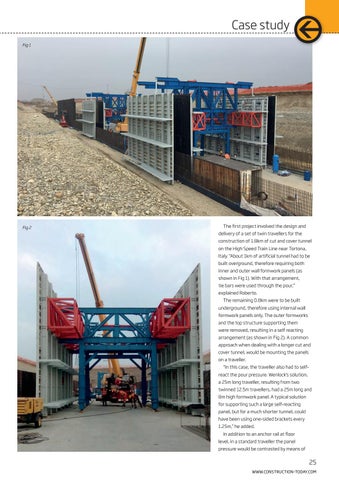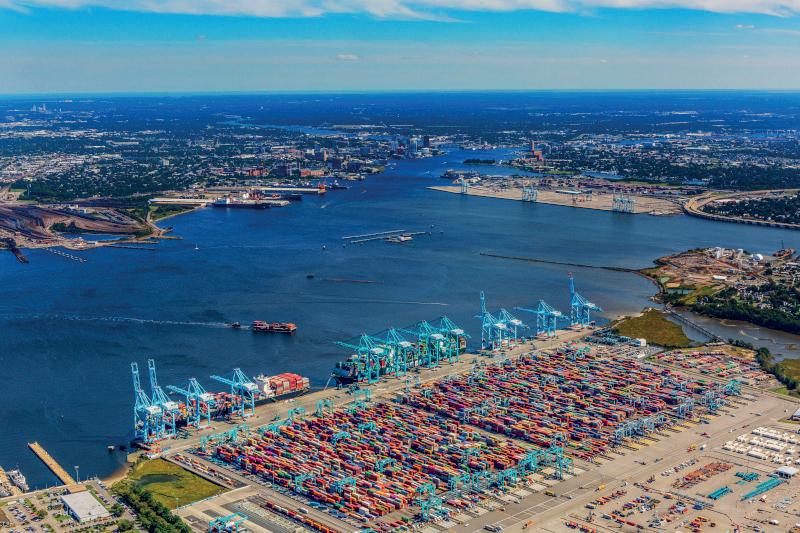Case study Fig 1
Fig 2
The first project involved the design and delivery of a set of twin travellers for the construction of 1.8km of cut and cover tunnel on the High Speed Train Line near Tortona, Italy. “About 1km of artificial tunnel had to be built overground, therefore requiring both inner and outer wall formwork panels (as shown in Fig 1). With that arrangement, tie bars were used through the pour,” explained Roberto. The remaining 0.8km were to be built underground, therefore using internal wall formwork panels only. The outer formworks and the top structure supporting them were removed, resulting in a self reacting arrangement (as shown in Fig 2). A common approach when dealing with a longer cut and cover tunnel, would be mounting the panels on a traveller. “In this case, the traveller also had to selfreact the pour pressure. Wenlock’s solution, a 25m long traveller, resulting from two twinned 12.5m travellers, had a 25m long and 8m high formwork panel. A typical solution for supporting such a large self-reacting panel, but for a much shorter tunnel, could have been using one-sided brackets every 1.25m,” he added. In addition to an anchor rail at floor level, in a standard traveller the panel pressure would be contrasted by means of
25 WWW.CONSTRUCTION-TODAY.COM









